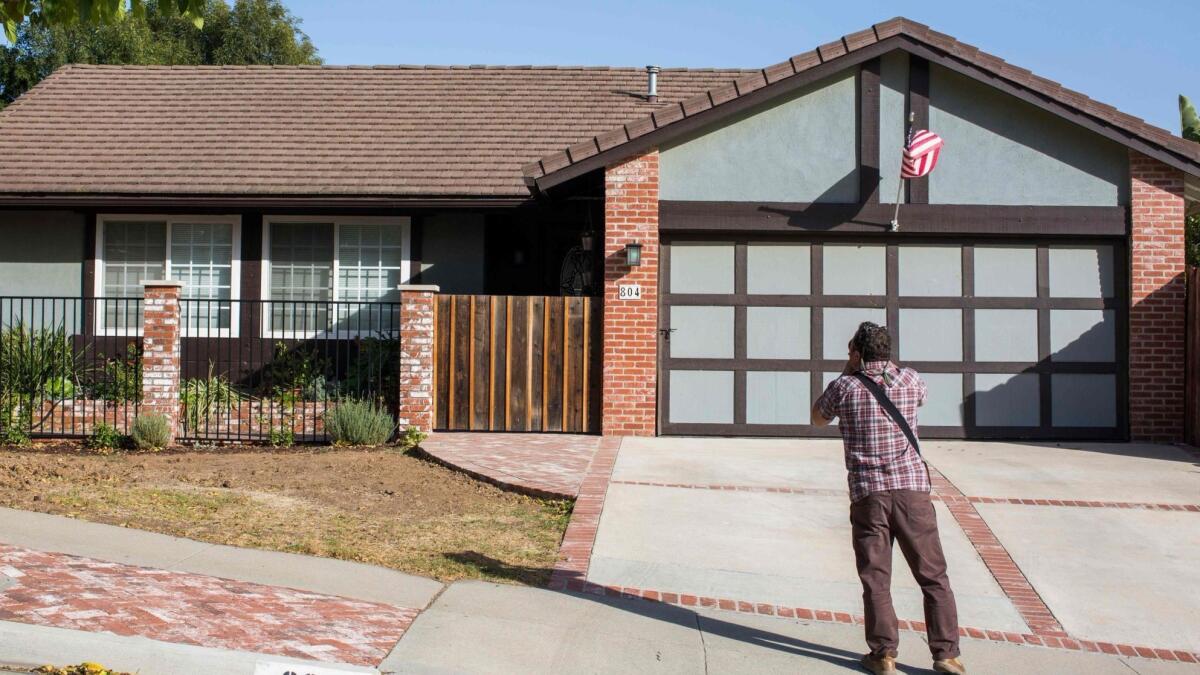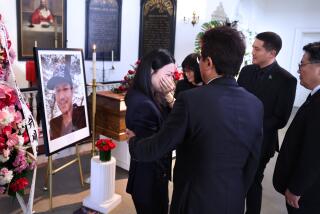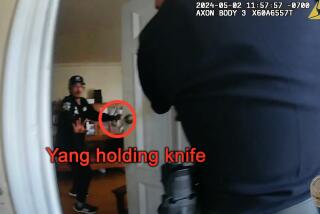Mental health experts declined to commit Thousand Oaks gunman Ian David Long after April disturbance

Police visited the home of Ian David Long, the 28-year-old who killed several people at a bar in Thousand Oaks, earlier this year after a call about a disturbance. Law enforcement officials determined he did not qualify for an involuntarily psychiatric hold, officials said.
Long, who died of a gunshot wound, was a former U.S. Marine machine gunner who likely suffered from post-traumatic stress disorder. Authorities were called to his home in April and found Long “somewhat irate, acting a little irrationally,” Ventura County Sheriff’s Sgt. Geoff Dean said in a news conference Thursday.
“They called out our crisis intervention team, our mental health specialists, who met with him, talked to him,” Dean said. “The mental health experts out there cleared him that day.”
To involuntarily commit someone in what is known as a “5150,” law enforcement must determine that the person has a mental illness and could cause immediate danger to themselves or others. The law carefully balances the rights of the individual to not be committed against his or her will against public safety, said Curt Child with Disability Rights California.
“Merely erratic behavior does not rise to that level,” Child said.
Law enforcement may look for evidence of suicidal or homicidal plans, but that often isn’t evident in the same way that the conditions of something like child abuse might be, said Mindy Mechanic, a psychology professor at Cal State Fullerton.
Long may have formulated plans for the shooting long after the welfare check. Officials said he purchased a gun after the April visit.
“When you’re talking about someone’s mental state, it’s a very fluid thing that can change rapidly,” Mechanic said. “It’s reasonable to hypothesize that when he was evaluated, even though he had PTSD, he was still stable.”
Serious mental illness does slightly increase someone’s risk for violence, but there is a “whole cocktail of factors that come together,” making violence very difficult to predict, said Jeffrey Swanson, psychiatry professor at Duke University School of Medicine who studies the link between mental illness and violence. One can’t draw a connection between PTSD or other mental illness and violence, he said.
“People believe that people with mental illness are dangerous — it doesn’t square with the facts,” he said.
PTSD makes people about three times more likely to commit an act of violence than those without any mental disorder, but that risk of violence jumps dramatically in people who also have a substance abuse problem, he said.
There are other risk factors for violence, he said, including being young, male, impoverished or experiencing trauma and violence at a young age.
In general, just 4% of violence is attributable to psychiatric illness, according to Swanson. He said access to guns is the real reason the country’s homicide rate is so much higher than elsewhere.
“When there’s a horrifying mass-casualty shooting, it’s so disturbing and so irrational and so frightening, and we hear this answer: It’s mental illness,” he said. “That’s just grossly oversimplified.”
Mental health experts were quick to warn that there is not a link between mental illness and mass shootings.
“Most people with mental illness will never become violent, and mental illness doesn’t cause most gun violence,” said Ron Honberg, senior policy advisor for the National Alliance on Mental Illness.
Perpetuating the false narrative that mental illness causes violence can increase stigma around mental illness and make it even harder for people to seek treatment, experts say.
Honberg said veterans are particularly unlikely to seek treatment — the “stiff upper lip” syndrome — and that he hopes that people begin seeking help sooner.
“We should be having those conversations,” he said. “But it’s sad, they only take place in the aftermath of violence.”
Twitter: @skarlamangla
More to Read
Sign up for Essential California
The most important California stories and recommendations in your inbox every morning.
You may occasionally receive promotional content from the Los Angeles Times.











